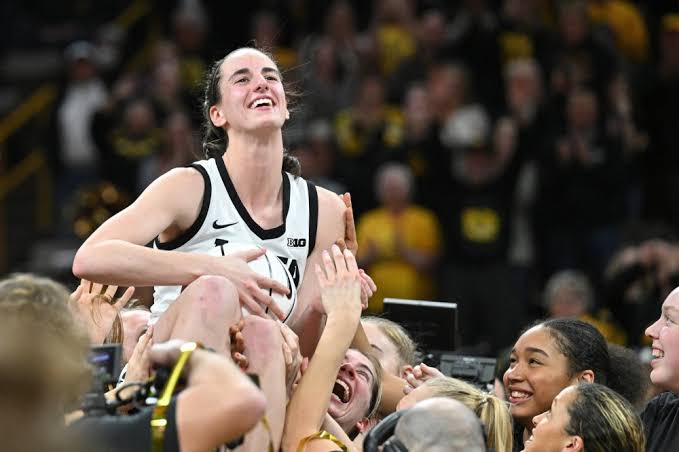The WNBA is at a crossroads, facing mounting pressure to make significant changes following the early elimination of Caitlin Clark and the Indiana Fever. Clark, one of the most electrifying players in women’s basketball, was widely anticipated to make an impact in the WNBA after a standout college career at Iowa. However, her season, along with the Fever’s, ended in disappointment, highlighting broader concerns about the league’s structure, schedule, and competitive balance. Fans, players, and analysts alike are calling for reforms that could better support emerging stars, improve team dynamics, and ultimately enhance the league’s overall appeal.
### The Impact of Caitlin Clark’s Elimination
Caitlin Clark’s presence in the WNBA brought a surge of excitement and new attention to the league. Her dynamic play style, long-range shooting, and competitive fire captivated fans during her college career, where she became one of the faces of women’s basketball. Clark’s early elimination from WNBA playoff contention, however, sparked widespread frustration. Fans and media have pointed to her exit as a missed opportunity for the league to showcase one of its most marketable talents on the national stage.
Clark’s season, while impressive individually, also highlighted the struggles of the Indiana Fever, a franchise that has long been in rebuilding mode. Despite Clark’s talent and the addition of promising young players, the team couldn’t find the right formula to make a deep playoff run. Her elimination not only diminished her own spotlight but also raised concerns about the parity in the league and the need for structural adjustments that allow emerging stars to thrive.
### Competitive Imbalance and League Growth
The WNBA has long struggled with competitive balance, with a small number of teams consistently dominating the league. This disparity was evident again this season, with several franchises, including the Fever, finding themselves outmatched by powerhouse teams. This growing divide between elite teams and struggling franchises is a major issue that many believe the league needs to address to ensure long-term success.
One of the proposals gaining traction is an expansion of the WNBA. Currently, the league has 12 teams, and with the rise of young stars like Clark, as well as increased interest in women’s basketball, there is a strong argument for adding more franchises. Expansion would not only provide more opportunities for players but also help distribute talent more evenly across the league. A larger league would give stars like Clark a better chance to be part of competitive teams and enhance overall parity.
Moreover, the WNBA’s salary cap and roster limitations are frequently cited as barriers to team building. With such tight constraints, teams often face tough decisions about whom to keep and whom to let go, which can hinder long-term development. Some suggest raising the salary cap or allowing for more flexibility in roster construction to give teams, especially those in rebuilding phases, a better chance to compete.
### Scheduling Issues and Playoff Format
The WNBA’s scheduling and playoff format have also come under scrutiny following the Fever’s and Clark’s early exit. With a relatively short regular season of just 36 games, some feel that teams do not have enough time to build chemistry or recover from rough starts. Additionally, injuries or early-season slumps can have an outsized impact, leaving teams like the Fever at a disadvantage despite having talented rosters.
The playoff format, which currently rewards teams with the best regular-season records by giving them byes into later rounds, has been criticized for being too unforgiving. While the intent is to reward consistent performance, it can also result in teams peaking too early or young, up-and-coming teams being eliminated before they’ve had a chance to prove themselves in high-stakes games. Some have called for a more inclusive playoff system that gives more teams a chance to compete, or even a return to a conference-based playoff structure to ensure that talent from both the East and West is represented equally.
### The Importance of Star Power and Fan Engagement
One of the WNBA’s key challenges is how to capitalize on the star power of players like Caitlin Clark. In women’s college basketball, players such as Clark, Paige Bueckers, and Aliyah Boston have become household names, drawing large viewership numbers and significant media attention. Yet, when they transition to the WNBA, the spotlight often dims due to limited national exposure and the league’s relatively low profile compared to men’s sports.
The WNBA must focus on improving its marketing strategies to build and maintain the excitement around its stars. This includes more national TV broadcasts, enhanced social media presence, and better storytelling around players’ journeys. Clark’s elimination, despite her significant following, underscores the need for the WNBA to create a more fan-friendly system that ensures its biggest names are in the spotlight during the most important moments.
### Conclusion: The Need for Change
Caitlin Clark’s early elimination and the struggles of the Indiana Fever have become a flashpoint for broader conversations about the WNBA’s future. The league finds itself in a unique position where interest in women’s basketball is at an all-time high, but the structures in place may not be sufficient to fully capitalize on this momentum. Calls for expansion, changes to the playoff format, and greater investment in marketing have grown louder, and the WNBA will need to seriously consider these ideas to ensure that the league continues to grow and thrive.
For players like Clark, who represent the future of the league, and for teams like the Fever, which are working to rebuild, these changes could make all the difference in creating a more competitive, exciting, and sustainable league for years to come.


